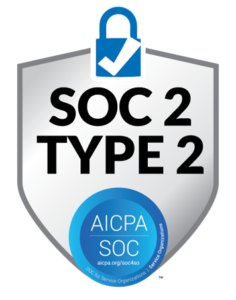Using coaching to improve distribution center performance
What is Performance Coaching?
Performance coaching is an ongoing process which helps build and maintain effective employee and supervisory relationships. With performance coaching, supervisors and employees work collaboratively to develop the skills and abilities of every team member in your distribution center. Successful coaching programs boost performance in your distribution center and help mitigate performance issues before they become serious problems. But for performance coaching to work, there are several elements that need to be built into the framework of the program.
Five Keys to a Successful Coaching Program
#1 Set Clear Expectations
Nearly all tasks in a distribution environment can be measured, including receiving, put-away, replenishment, picking, and packing. Your coaching program should be linked to clear expectations for each task. These expectations can be set within a Labor Management System Program that establishes best practices and standard operating procedures for each warehouse activity and validates the procedures with employees. Using engineered labor standards is the most accurate means for setting performance expectations, and will create the best foundation for your coaching efforts. Engineered labor standards will enable your coaching to be based on a level playing field that’s fair to all associates, from new trainees to experienced veterans.
#2 Observe Regularly
True performance coaching occurs over a period of time, not in a single meeting or via an occasional comment. Coaching should be set up at scheduled intervals, on an as-needed basis, or a combination of both. Remember, coaching can, and should, continue after an associate’s formal onboarding period ends to reinforce lessons learned and ensure new processes are understood and followed.
#3 Ask Questions and Listen
Performance coaching is all about developing the skills and performance of the associate, while also increasing engagement between supervisors and team members. It’s important to focus on building two-way communication. The employees who are doing the work every day are in the best position to identify obstacles in their environment and suggest better ways to complete the work effectively.
#4 Capture and Share Performance Metrics
Performance coaching is most successful when it’s supported by data. A labor management system (LMS) can provide access to real-time performance data in your distribution center. You can use those metrics to guide your coaching sessions, so that everyone knows where they stand and where they need to improve. Focus your communication equally between associates who are performing well and those that might be struggling to perform at the minimum performance level.
#5 Considers Skills, Tools, and Environment
An effective coaching program ensures that associates receive all the training and tools they need to reach and exceed baseline performance. Is an associate taking extra steps to complete a task? A one-on-one observation and coaching session is the ideal process for a supervisor to spot this and offer guidance on improving the process and ultimately performance.
Benefits of Performance Coaching
While it’s generally recognized that a well-coached employee will feel more positive about their job, manager, employer, and future at the company, industry research has documented the ROI from coaching through improved work performance and increased employee engagement and retention.
In one study, more than 70 percent of coaching recipients increased work performance and improved relationships and communication with their supervisors. Research from Bersin by Deloitte also found that organizations with strong support for coaching had 34 percent higher business results and 39 percent stronger employee performance.
How Coaching Can Be Used to Improve Distribution Center Performance
Today’s warehouse workers need to be more skilled than ever before for organizations to be successful. An effective coaching program can not only help to improve employee performance, but it can also help organizations identify areas where new skills are needed.
An organization can also use performance coaching to help cross train employees. When employees develop multiple skill sets and can perform multiple tasks, they can step into other areas to help clear bottlenecks, increase throughput capacity, and reduce overtime.
Conclusion
In most supply chains, distribution center labor costs make up a significant portion of the total operating cost. As such, logistics organizations would be well served to evaluate and adopt a more people‐oriented managerial approach, like performance coaching, which focuses on personnel development and creating a more rewarding work environment.
TZA is committed to making employee engagement and high performance an integral part of your company’s culture. Our ProTrack Labor Management System System gives managers the tools they need to more effectively communicate, coach, and counsel their associates. ProTrack supports this approach by providing managers and supervisors with the ability to automatically schedule and track observations and coaching sessions, easily configure custom skill assessment checklists, and perform on-floor observations using a mobile device.
If you’re ready to learn more, schedule a demo today to learn how TZA can help your organization build a foundation for a highly productive operation and increase employee engagement resulting in a high-performance culture.

